As the days become longer and temperature rise, butterflies are emerging from hibernation. Here are five butterflies to look out for this spring!
Did you know, some butterflies overwinter as adults while some will remain in their chrysalis waiting for the arrival of spring? As an adult, they will feed on a variety of plants. However, they will choose specific host plants on which the larvae will feed to lay their eggs. In this blog you will learn the key identification features of five spring butterflies and their host plants.
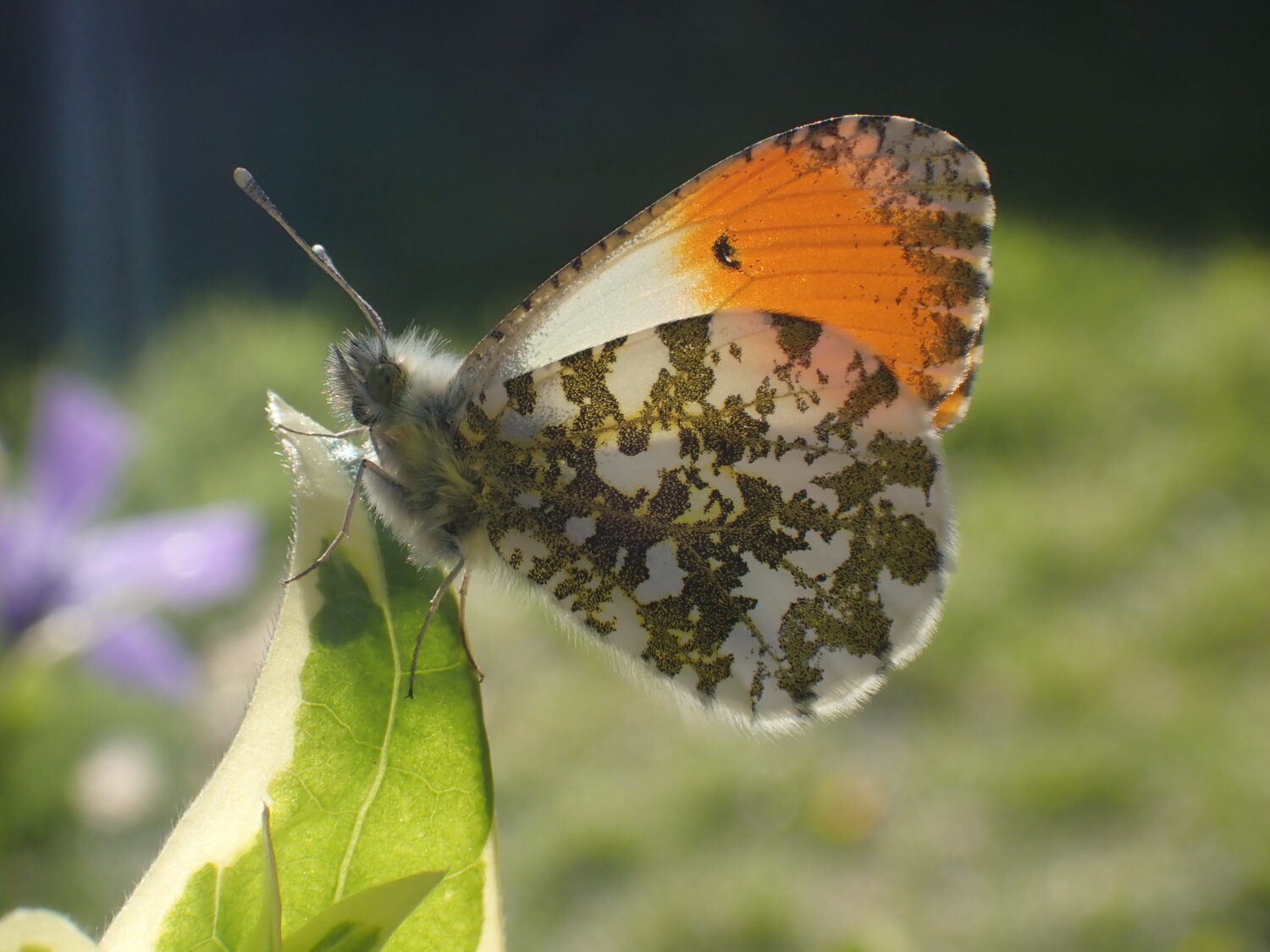
Orange-tip Butterfly
Males of the Orange-tip butterfly live up to their name and have a characteristic orange tip to their upper wings which the females lack. Their underwing is mottled which helps them camouflage with surrounding vegetation. Their larval food plants are Garlic Mustard and Lady’s Smock on which they will lay a single egg each year. This helps avoid competition when the larvae hatch.
Did you know? The Orange-tip butterfly’s underwing has no green pigmentation. It is an illusion created by the mottling which makes them appear green.
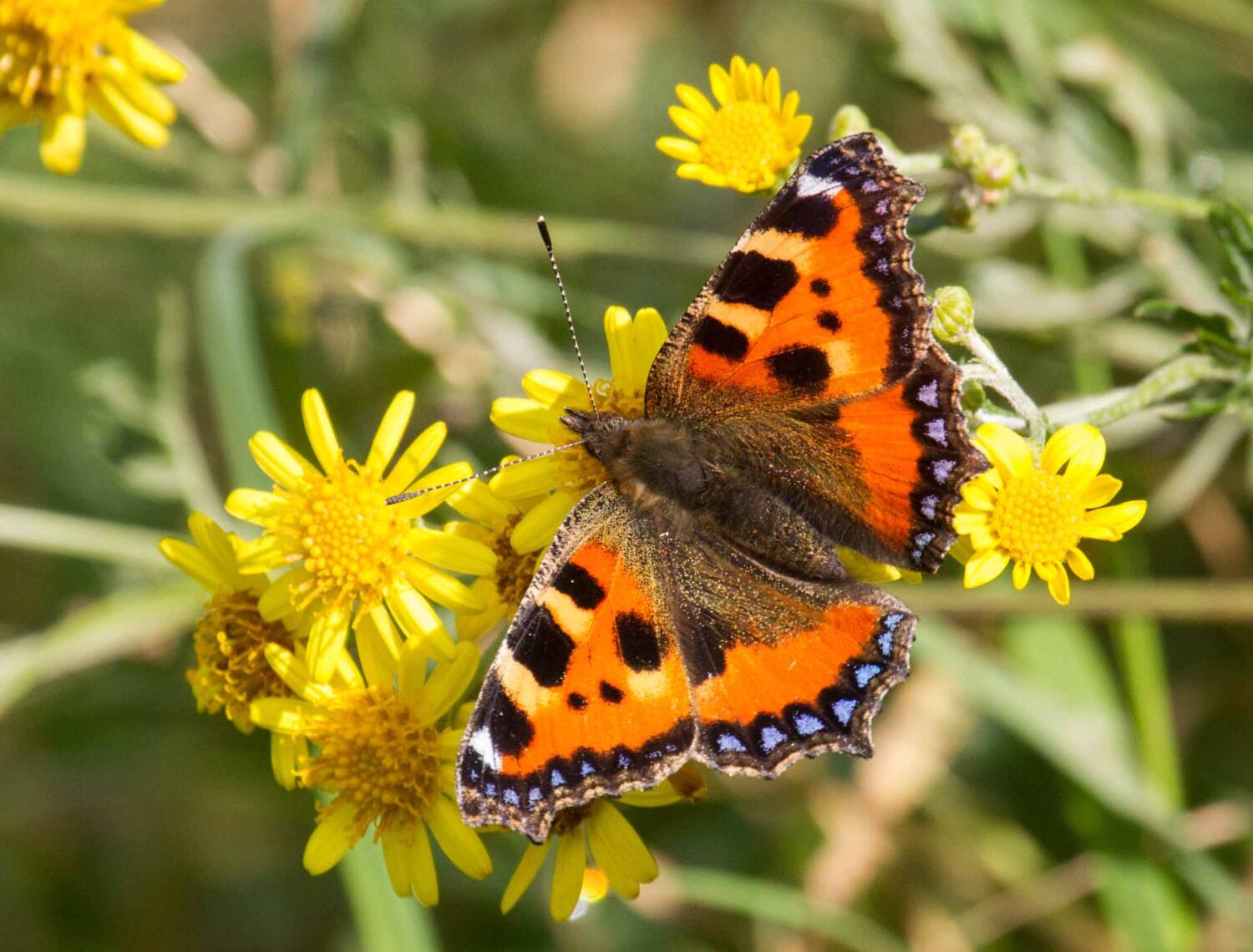
Small Tortoiseshell
The Small Tortoiseshell’s upperwings are predominantly orange and brown with black blotches at the top of its forewings. They have characteristic bright blue spots around the entire margin along the upperwings which, separates them from similar coloured butterflies.
They will lay their eggs on both the Common and Small Nettles.
Small Tortoiseshell © John Buxton
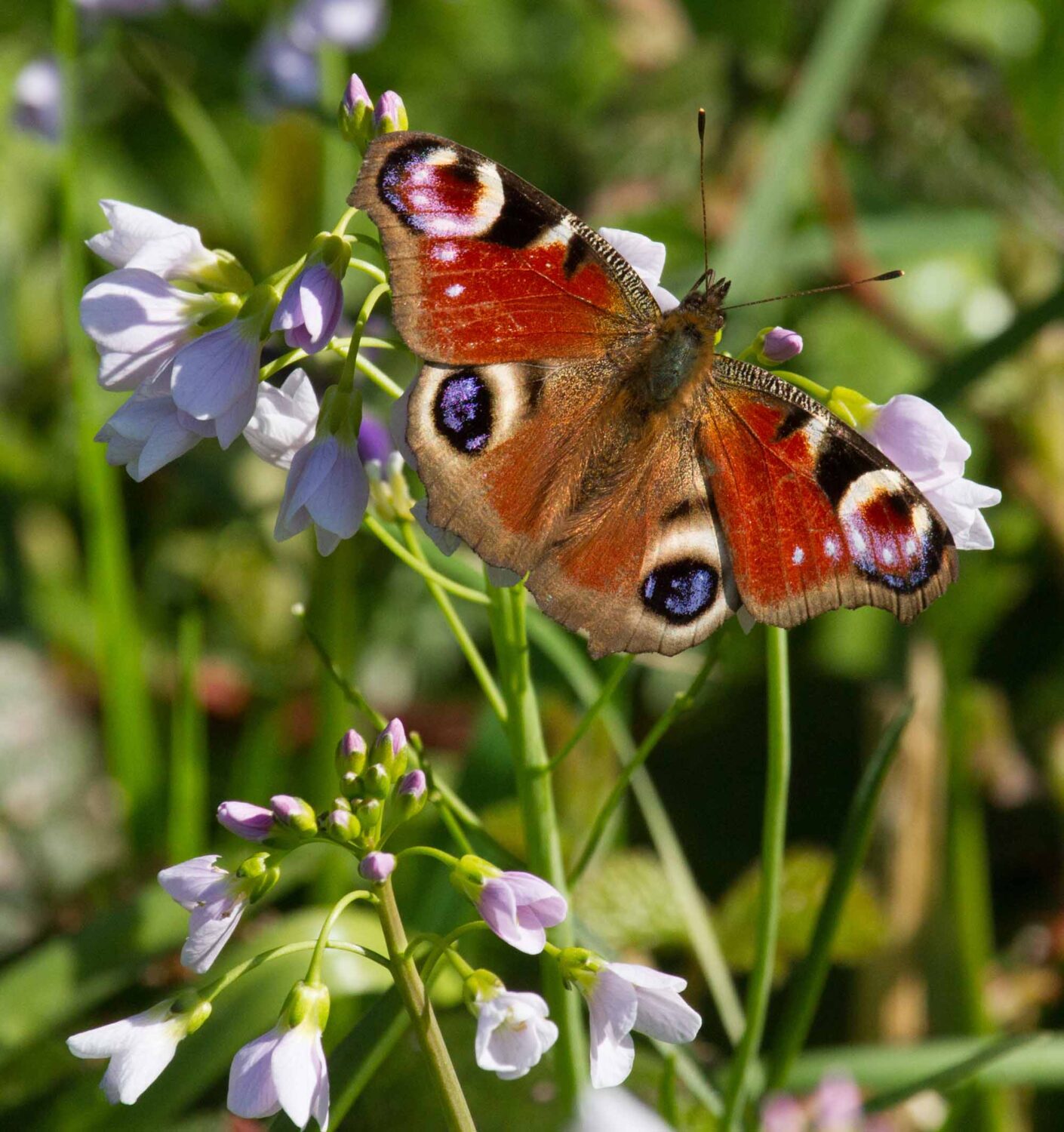
Peacock Butterfly
One of the largest butterflies in the UK, the Peacock Butterfly sports four large, eye spots on each of its red wings, resembling the tips of the tail feathers of a Peacock. These spots are used to intimidate potential predators. The margins of the upper wings are smoky black in colour. Its underwing resembles the texture of rough bark.
Like the Small tortoiseshell, the Peacock butterfly lays its eggs on Common Nettle, sometimes also utilising Small Nettle and Hop.
Peacock Butterfly © John Buxton
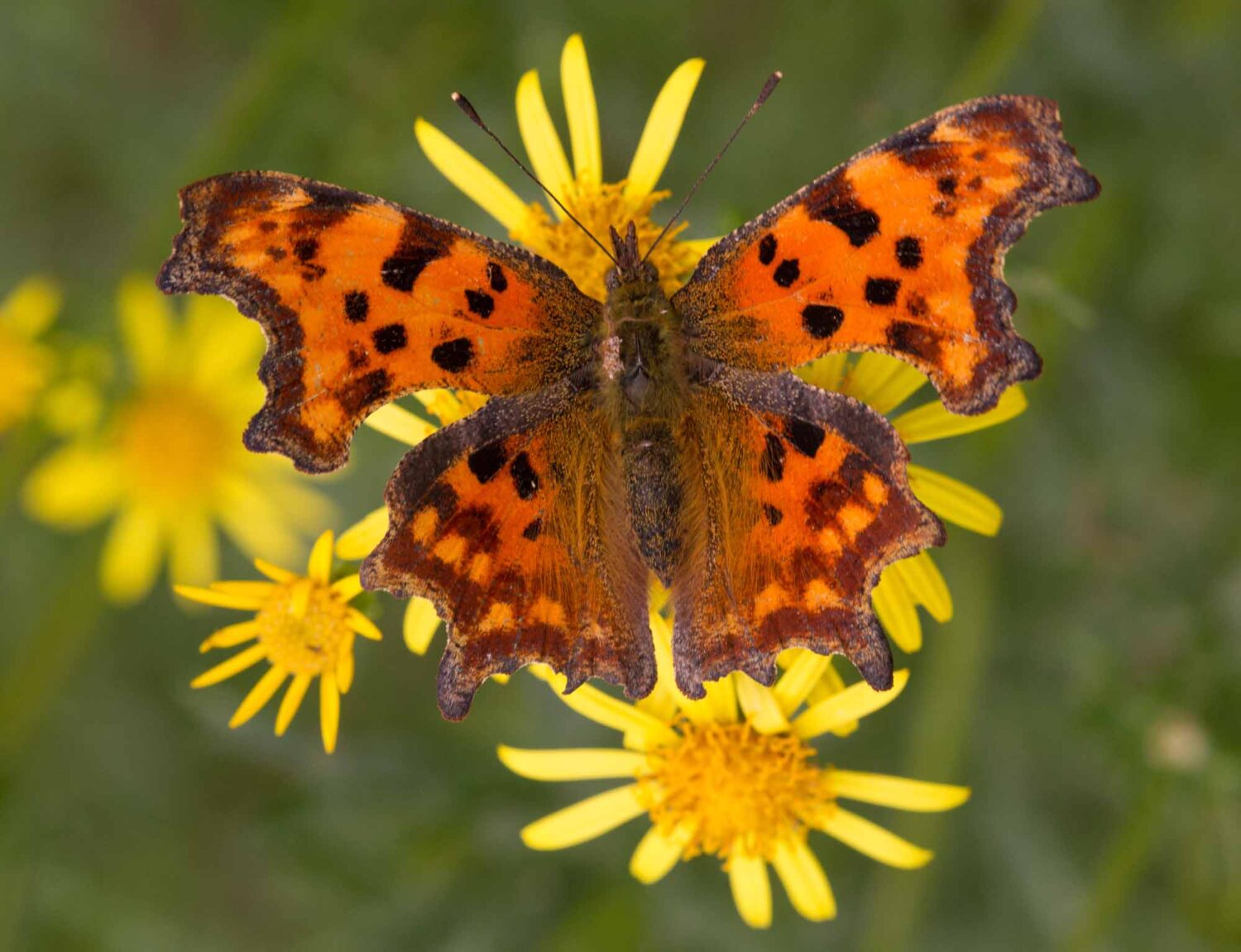
Comma Butterfly
The Comma Butterfly gets its name from the white comma or “C” shaped mark on its underwing. Its upperwing is orange with numerous brown and black blotches. The margins of this butterfly’s wings give off the impression that it has been burnt with irregular notches and lined with a faint, fading brown colour.
Its larval food plant are Common Nettle, Hop, currants and willows.
Comma Butterfly © John Buxton
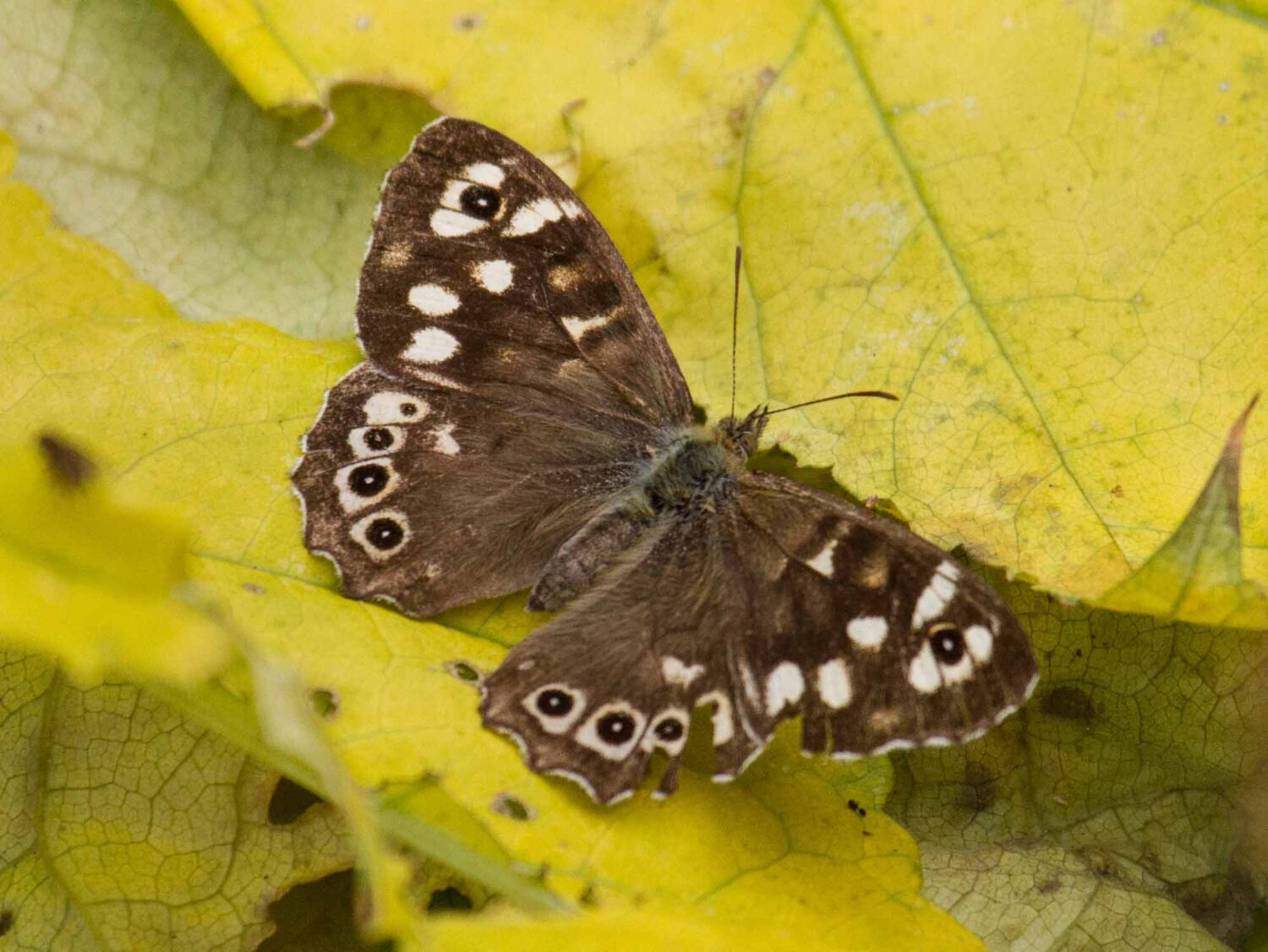
Speckled Wood
Likely because of climate change, the Speckled Wood has rapidly made its way up northwards and is now common in the North East. It is warm brown in colour, with bright yellow blotches on its upper wings. Its lower wing have a distinctive eye spot at the tip. As its name suggests, this butterfly can be found in woodland clearings. However, it is also commonly found visiting gardens and parks.
The larval food plant consists of False Brome, Cock’s-foot, Yorkshire-fog and Common Couch.